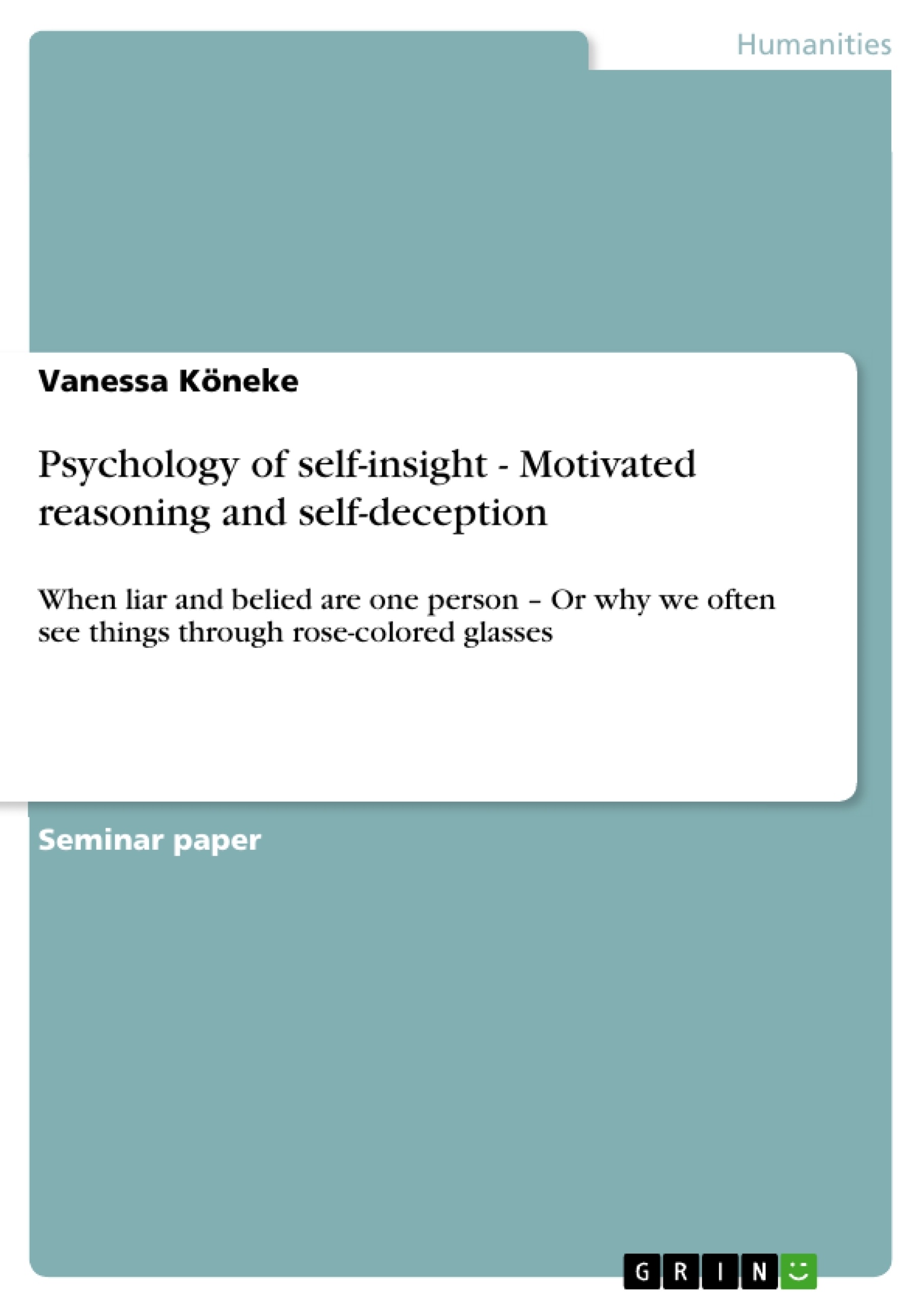Those who are interested in soccer certainly know it: the Wembley goal from 1966 and the debate about whether it was a goal or it was not. While the English fans (for whom the goal would have gained the lead) certainly perceived it as a goal, the Germans believed the ball had not crossed their goal line. And both groups were sure they are right - a perfect example for motivated reasoning!
The term motivated-reasoning refers to a kind of self-regulation that enables people to believe in favorable things, although there is some severe evidence to disprove those beliefs. Motivated-reasoning is closely linked to terms like “wishful thinking” and “denial” and might lead to “unrealistic optimism” or “self-deception”. It especially occurs in situations that threaten one´s self-concept or previously held expectation of one´s future.
Imagine for example, somebody is fired from a job, although that person believes him or herself to be an intelligent and capable employee. Or a man who believes he is happily married, but then his wife comes home smelling of someone else’s after-shave. Both persons are potential victims for motivated-reasoning because motivated-reasoning enables them to keep their positive beliefs. The fired person – imagine she is a woman – might, for example, consider she was fired because the boss was sexist. And the cheated husband might convince himself that the smell of cologne is the result of his wife standing very close to another man on the tram.
Motivated-reasoning is a widespread phenomenon. People have the ability – and often also the opportunity – to see a glass as being half full or half empty.
But how exactly does motivated-reasoning function? How can one betray oneself? Are people aware of deceiving themselves and how far can they go in doing so? What kinds of motivation drive them? And perhaps most importantly, is it or is it not useful that people are able to see what they want to see? The current text will give answers to all those questions.
Inhaltsverzeichnis (Table of Contents)
- Introduction
- How can one betray oneself? - Proposed mechanisms
- To reason or not to reason?
- Biased hypothesis testing
- Motivated perception
- Triggers and Mediators
- The reason behind the reasoning - Proposed motives
- Self-esteem or self-maintainance?
- Self-protection or self-enhancement?
- Any motivation at all or just violation of expectation?
- Motivated reasoning in economical and political contexts
- Advantages and disadvantages of self-deception
Zielsetzung und Themenschwerpunkte (Objectives and Key Themes)
The text explores the concept of motivated reasoning, a cognitive process that allows individuals to maintain favorable beliefs despite contradictory evidence. This self-regulation mechanism is closely related to concepts like wishful thinking, denial, and self-deception, particularly in situations that threaten one's self-concept or pre-existing expectations.
- The mechanisms of motivated reasoning and their relationship to cognitive processes and emotional biases.
- The motivations behind motivated reasoning, including self-esteem, self-protection, and the avoidance of unpleasant realities.
- The impact of motivated reasoning in various contexts, particularly in economic and political domains.
- The potential advantages and disadvantages of self-deception and its effects on individual behavior.
- The broader implications of motivated reasoning for understanding human psychology and decision-making.
Zusammenfassung der Kapitel (Chapter Summaries)
- Introduction: This chapter introduces the concept of motivated reasoning through anecdotal examples and explores its connection to self-deception. It highlights the phenomenon of individuals selectively interpreting information to maintain favorable beliefs even when confronted with contradictory evidence.
- How can one betray oneself? - Proposed mechanisms: This chapter delves into the mechanisms of motivated reasoning, examining how it operates on a cognitive level. It discusses the roles of biased hypothesis testing, motivated perception, and the selective processing of information in shaping individuals' beliefs.
- The reason behind the reasoning - Proposed motives: This chapter focuses on the underlying motivations driving motivated reasoning. It explores the role of self-esteem, self-protection, and the avoidance of unpleasant realities in influencing individuals' interpretations of information.
- Motivated reasoning in economical and political contexts: This chapter examines the application of motivated reasoning in economic and political settings. It analyzes how individuals' beliefs and behaviors are shaped by political affiliations, economic interests, and the desire to maintain a positive view of the world.
- Advantages and disadvantages of self-deception: This chapter explores the potential benefits and drawbacks of self-deception. It examines how motivated reasoning can be a protective mechanism, but also how it can lead to distorted perceptions and ultimately hinder personal growth and well-being.
Schlüsselwörter (Keywords)
This work examines the key concepts of motivated reasoning, self-deception, cognitive biases, emotional regulation, self-esteem, self-protection, and the selective processing of information. It delves into the psychological mechanisms and motivations underlying motivated reasoning, as well as its implications for decision-making, behavior, and societal phenomena.
- Quote paper
- Vanessa Köneke (Author), 2009, Psychology of self-insight - Motivated reasoning and self-deception, Munich, GRIN Verlag, https://www.grin.com/document/173597



